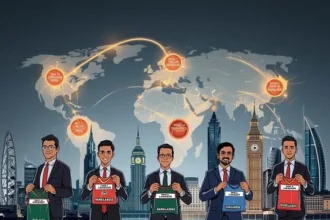For most of 2025, U.S. apparel prices have stayed unusually quiet. Some small fluctuations appeared, but nothing significant. Compared to the rest of the economy, clothing has been the calm water amid a choppy sea. It’s easy to think we’ve avoided the worst.
We haven’t seen it yet, but pressure is mounting below the surface: higher costs for inputs, labor, freight, and tariffs. Retailers, along with their supply chains, have been covering a tariff-induced gap with promotions and margin cuts, but that’s only a temporary fix, not a solution. Once the pressure peaks, apparel won’t be a footnote in the Consumer Price Index (CPI); it’ll become part of the headline.
August’s 0.5% monthly increase for apparel (the sharpest since February) wasn’t a coincidence. It was a warning. One month doesn’t establish a trend, but it signals a change. Indeed, the industry has been holding steady, but that stability is beginning to break down. The question isn’t ‘if’ prices will go up. It’s ‘when,’ ‘how fast,’ and ‘who will give in first.’
My Forecast for Apparel Price Inflation Rates (2025–2027)
| Region | 2025 Inflation (%) | 2026 Inflation (%) | 2027 Inflation (%) |
|---|---|---|---|
| United States | 0.5–1.5 | 1.5–3.0 | 1.5–3.5 |
| European Union | 1.0–2.0 | 1.5–2.5 | 1.5–3.0 |
| United Kingdom | 1.5–3.0 | 2.0–4.0 | 2.0–4.5 |
| China | 0.0–1.0 | 0.5–1.5 | 1.0–2.0 |
| India | 2.0–4.0 | 2.5–4.5 | 3.0–5.0 |
| Latin America | 5.0–10.0 | 6.0–12.0 | 5.0–15.0 |
Also Read: Say It Ain’t So: Why Slam India With Such High Tariffs?
Apparel Inflation vs. the Broader Economy
Start with the basics. The ‘Core’ U.S. CPI (which excludes food and energy) has been around 3.0–3.1% year-over-year, while apparel has remained flat or increased slightly. That gap gave consumers some breathing room. Rent, insurance, and healthcare costs rose more; clothing didn’t contribute to that increase. That’s been the story.
But gaps like that don’t stay open forever. If apparel moves from the 0–1% zone toward 2–3%, it adds another steady drain on household budgets. It’s not the spike that hurts; it’s the ongoing grind. Over a few quarters, that grind becomes apparent in slower unit turns and more selective shopping carts.
Retailers understand this, which is why they have resisted passing costs onto consumers. Clothing is discretionary spending. When prices increase, shoppers go elsewhere. This strategy works until it doesn’t. That is, until gross margin calculations don’t add up, purchase orders slow down, and someone opts to raise sticker prices slightly. Then others follow suit.
The Forecast: Base, High, and Low Cases
Making market forecasts might be a fool’s errand, but it’s important we offer some context for current conditions and what it could reasonably look like in the future.
Base case for 2025: U.S. apparel prices end the year up about 0.5% to 1.5%. That’s stronger than the near-zero growth seen early in the year, but not cause for concern. The market is simply adjusting, not panicking. Promotions continue, though they become slightly fewer.
For 2026, the baseline shifts to 1.5%–3.0%. That’s the range where buyers notice and finance teams adjust guidance. If shipping tightens, oil prices rise, or tariffs become even more severe, the high case moves into the 4%–6% range. This isn’t a wild scenario; it’s what happens when two or three cost factors push in the same direction.
Also Read: Trump’s Tariffs and Beyond – Robert Antoshak on Trade, Tariffs and Transformation
Could it go the other way? Sure. If demand drops and inventory builds up, markdowns do the work and inflation moves back toward zero. But don’t base a plan on the best-case scenario of clearance. The middle path, modest but steady price increases, is the realistic approach.
By 2027, the cone of uncertainty broadens: 1.5%–3.5% is a reasonable estimate. Trade policy, energy, and freight routes influence the extremes. A more stable world keeps prices steady. A more volatile world drives them higher. The only thing that seems unlikely is a return to the very flatline.
Global Comparisons
Europe first. Apparel prices there have been rising gradually, with ups and downs. Northern markets like Germany and France follow broader inflation trends; Southern markets move more slowly when demand is weak. As input costs increase, such as energy, labor, and compliance, price tags inch higher. It’s not a surge, but it’s not static either.
The U.S. economy is more volatile. Consumer sensitivity remains high, promotional activities are cultural, and competition is fierce. Retailers manage currency fluctuations, freight costs, and tariffs while trying to maintain traffic. Some months, apparel prices grow faster than core inflation; other months, they fall back. The pattern isn’t chaos—it’s pricing power flickering on and off as costs and demand alternate.
China’s a different story. Growth has cooled, confidence is tentative, and you can see deflationary pressure bleeding into apparel. That keeps sticker prices tame for now, but factory wages and compliance costs still creep up. Those costs don’t disappear—they show up in export prices, thinner margins, or both.
India’s running hotter. Inflation’s sticky, and apparel is riding the cost of cotton, yarn, and logistics. A growing middle class is now accepting price points that would’ve been tough a few years back. India stacks up well against China on value, but rising labor and raw material costs are real. There’s value to be had; there’s just no free lunch.
Across Latin America — especially in Brazil and Argentina — currencies swing and the macro noise never stops. Apparel prices move with it. Volatility makes planning harder, so you hedge when you can, shorten commitments when you can’t, and live with wider error bars on forecasts. The longer arc still tilts upward.
For sure, the inputs that make clothes — cotton or MMF, energy, labor, freight, and compliance — aren’t getting cheaper. Some markets have delayed passing that through to shoppers; others are doing it now. The direction of travel is the same everywhere; only the timing changes.
Why 2026 Will Be the Breaking Point
Retailers can buy time with fewer promos, different specs, and new factories by spreading volumes. All of that delays the clock, but doesn’t stop it. When landed costs increase quarter after quarter, the buffer narrows, forcing decisions to be either pay or price.
Import prices are transparent. Freight is calmer than during the pandemic peak, but it’s not consistently cheap. Labor rates in Asia remain steady. Compliance and traceability requirements increase workload and costs. Overall, 2026 appears to be the year when economic realities push for change.
Consumers will notice it. Apparel has been one of the last areas where budgets experienced some relief. When clothing accounts for a larger share, it becomes another line item where purchasing power declines. That’s when units slow, mix shifts downward, and value storytelling becomes important again.
It’s Happening Now, Get Ready
Don’t let today’s muted reads fool you. The industry has been taking in more than it shows. Late 2025 will see selective price hikes by brand and category, often on imports where duty and freight play a big role. It won’t be widespread, but it will stand out.
In 2026, the dam begins to weaken. The gap between apparel and core inflation narrows as costs become reflected in prices. By 2027, tariffs and trade policies will decide whether we settle into a steady 2–3% growth or jump to a more volatile rate. Policy will either restrain the fire or fuel it further.
Clothing prices are rising. Maybe gradually, maybe suddenly, but they’re going up. Retailers can’t absorb costs forever, and suppliers aren’t charities. When the cost increases pass through, shoppers will notice. And so will the P&L.
About the Author

Robert Antoshak, Vice President of Global Strategic Sourcing & Development at Grey Matter Concepts, brings over 30 years of experience in the textile and apparel sector. He has advised governments, led consulting projects worldwide, and written extensively on global trade, sustainability, and sourcing. Previously a Partner at Gherzi Textil Organisation, he continues to shape industry perspectives through his articles and thought leadership.
Antoshak is a regular contributor to just-style.com and sourcingjournal.com.











